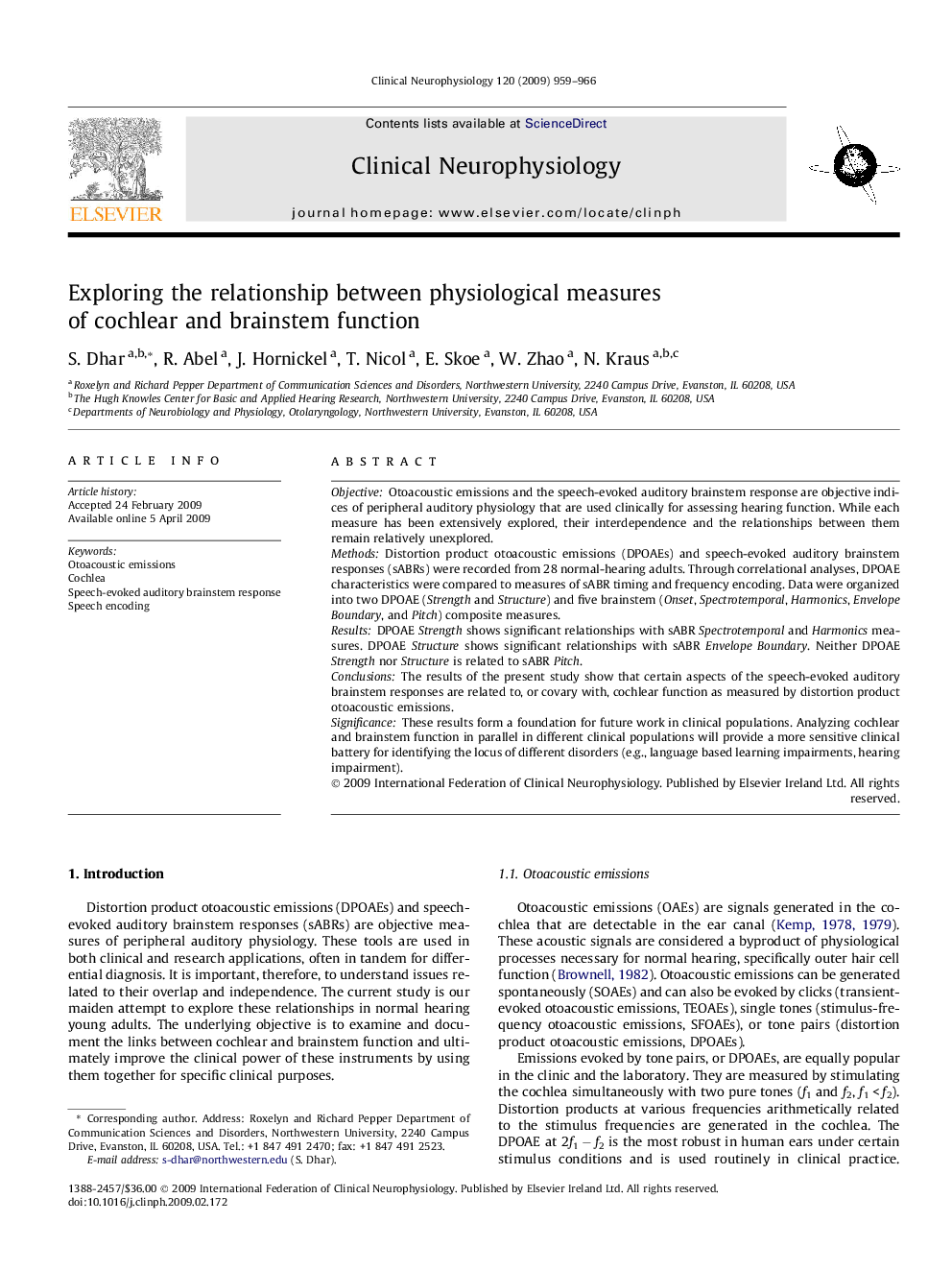| Article ID | Journal | Published Year | Pages | File Type |
|---|---|---|---|---|
| 3046054 | Clinical Neurophysiology | 2009 | 8 Pages |
ObjectiveOtoacoustic emissions and the speech-evoked auditory brainstem response are objective indices of peripheral auditory physiology that are used clinically for assessing hearing function. While each measure has been extensively explored, their interdependence and the relationships between them remain relatively unexplored.MethodsDistortion product otoacoustic emissions (DPOAEs) and speech-evoked auditory brainstem responses (sABRs) were recorded from 28 normal-hearing adults. Through correlational analyses, DPOAE characteristics were compared to measures of sABR timing and frequency encoding. Data were organized into two DPOAE (Strength and Structure) and five brainstem (Onset, Spectrotemporal, Harmonics, Envelope Boundary, and Pitch) composite measures.ResultsDPOAE Strength shows significant relationships with sABR Spectrotemporal and Harmonics measures. DPOAE Structure shows significant relationships with sABR Envelope Boundary. Neither DPOAE Strength nor Structure is related to sABR Pitch.ConclusionsThe results of the present study show that certain aspects of the speech-evoked auditory brainstem responses are related to, or covary with, cochlear function as measured by distortion product otoacoustic emissions.SignificanceThese results form a foundation for future work in clinical populations. Analyzing cochlear and brainstem function in parallel in different clinical populations will provide a more sensitive clinical battery for identifying the locus of different disorders (e.g., language based learning impairments, hearing impairment).
